How to attach Christmas lights to brick walls – 5 hacks from DIY experts, and the easiest method revealed
I spoke to DIY pros about how to attach Christmas lights to brick walls – they taught me the only way to do it
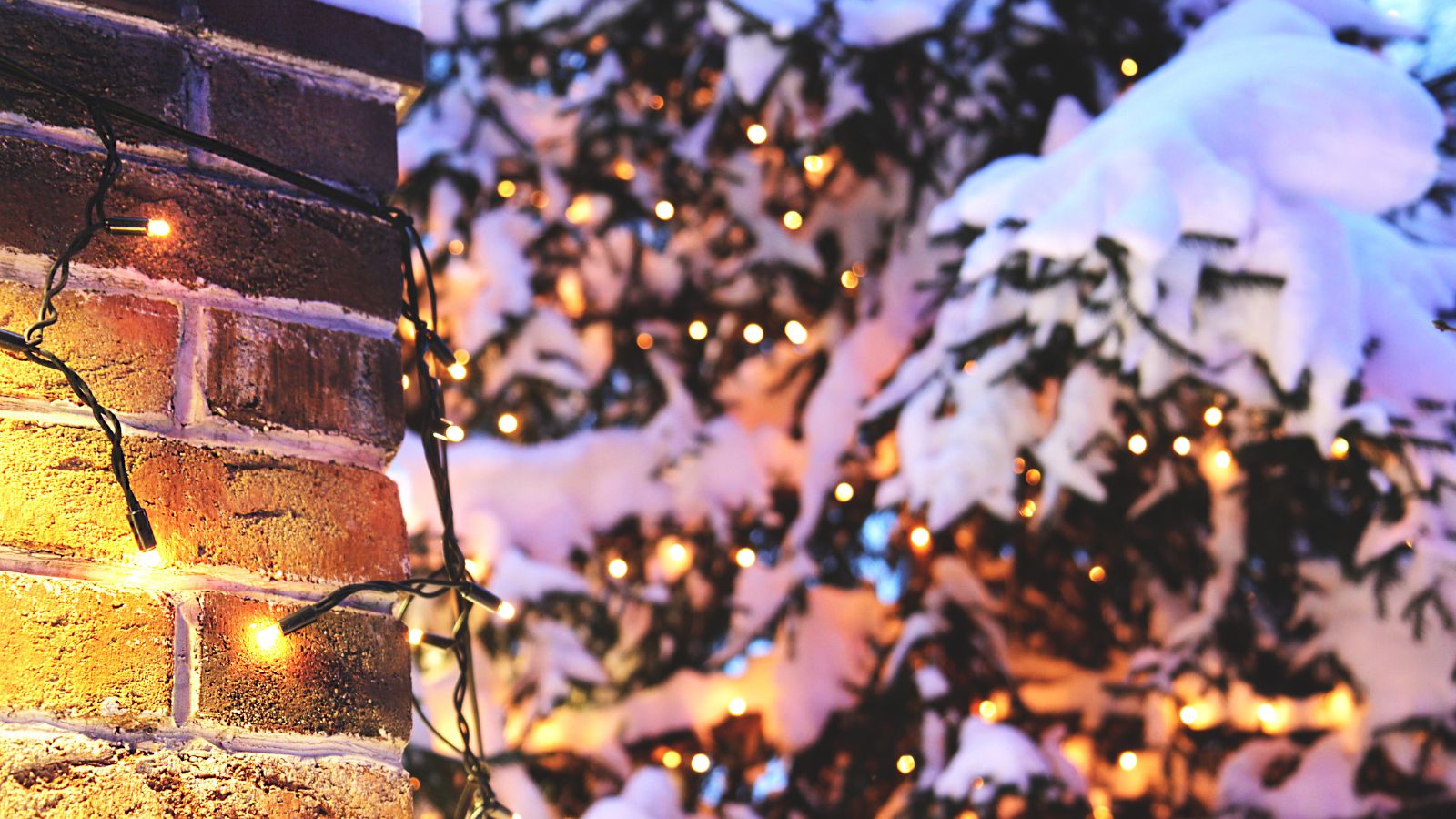

There's nothing like a Christmas light display over the holidays. They bring a little light and color to your home during the darkest, coldest month of the year.
However, this can appear tricky if you have brick walls. You don't want to have to drill any hooks into the walls just for the holidays, because it's a lot of work for such a short part of the year.
Thankfully, you don't have to. I spoke to experts about the best way to fix outdoor Christmas lights to a brick wall, and they gave me simple solutions free from finicky DIY.
1. Brick clips
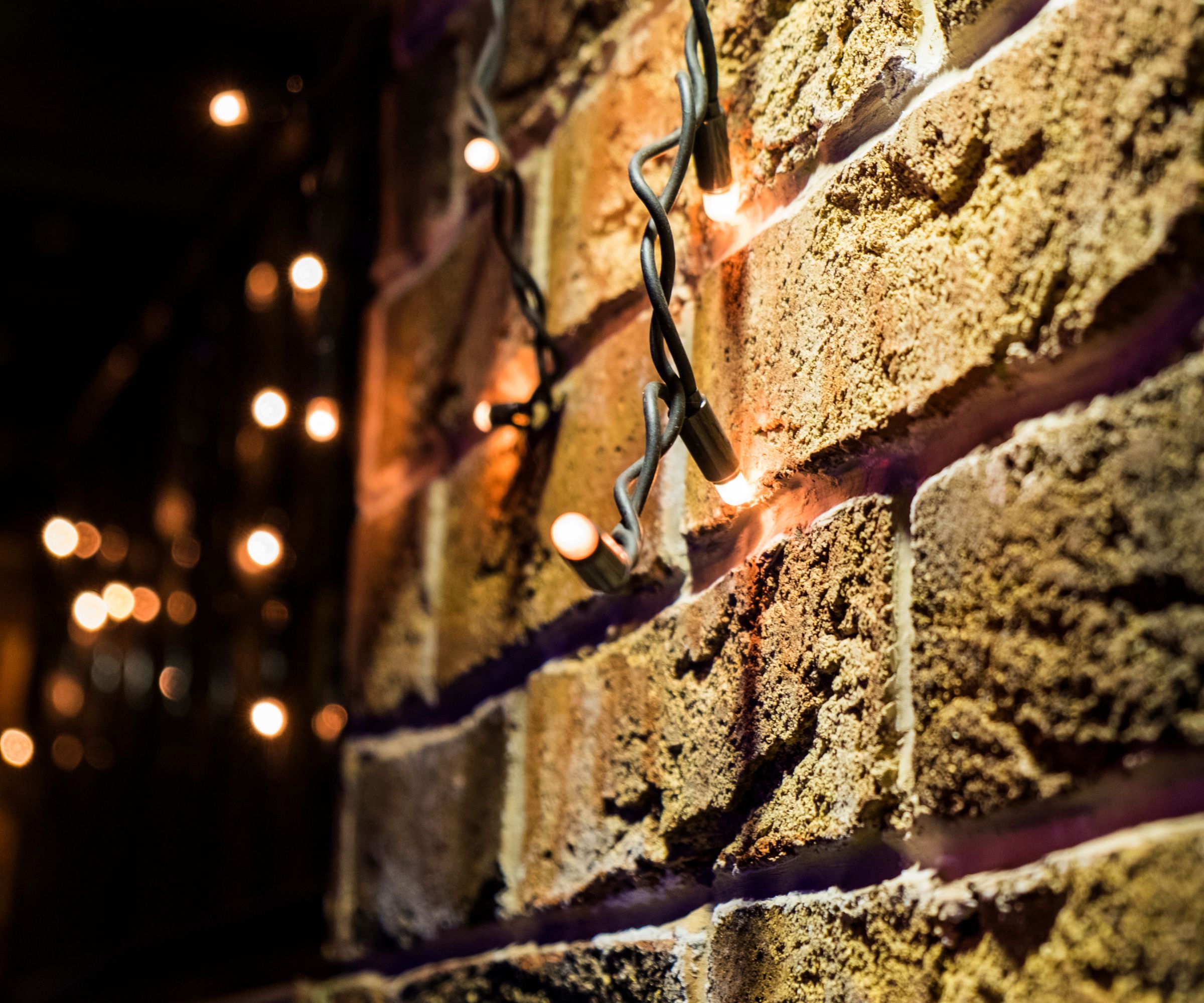
By far the easiest way to attach Christmas lights to brick is to use brick clips. Inexpensive and widely available - such as this 10-pack of brick clips for $10.97 at Walmart - brick clips clip onto the edges of the brick and have a little hook for hanging lights.
Home expert Steven Menaat explains that 'The most effective way to attach Christmas lights to brick is brick clips, which you can purchase in any hardware store. You use them by jamming them into the spaces in between bricks, and they fit perfectly well when you size up the spaces properly. From there, you can hang any corded lights and make your space festive without any hassle.'
There are a lot of benefits to this. Home renovation expert Myles Robinson explains that 'Brick clips are specially designed to grip onto the edges of the bricks without requiring nails, screws, or adhesives. They’re sturdy and reusable, making them a common choice for many, especially if you hang lights on brick year after year.' Unlike the other methods below, there's no risk of marking the brickwork or having to do extensive DIY.

Steven Mena is the CEO of AAA Fence and Deck, a leading provider of high-quality fencing and decking services in Raleigh, NC. The company specializes in professional installation of wood, vinyl, aluminum, chain-link, composite, and pool fences for residential, commercial, and industrial properties with 30 years of experience.

Myles is an expert all things home - he recently sold a boiler repair business and started a new door company. He has experience with a wide range of materials, installation, and property maintenance.
2. Hot glue
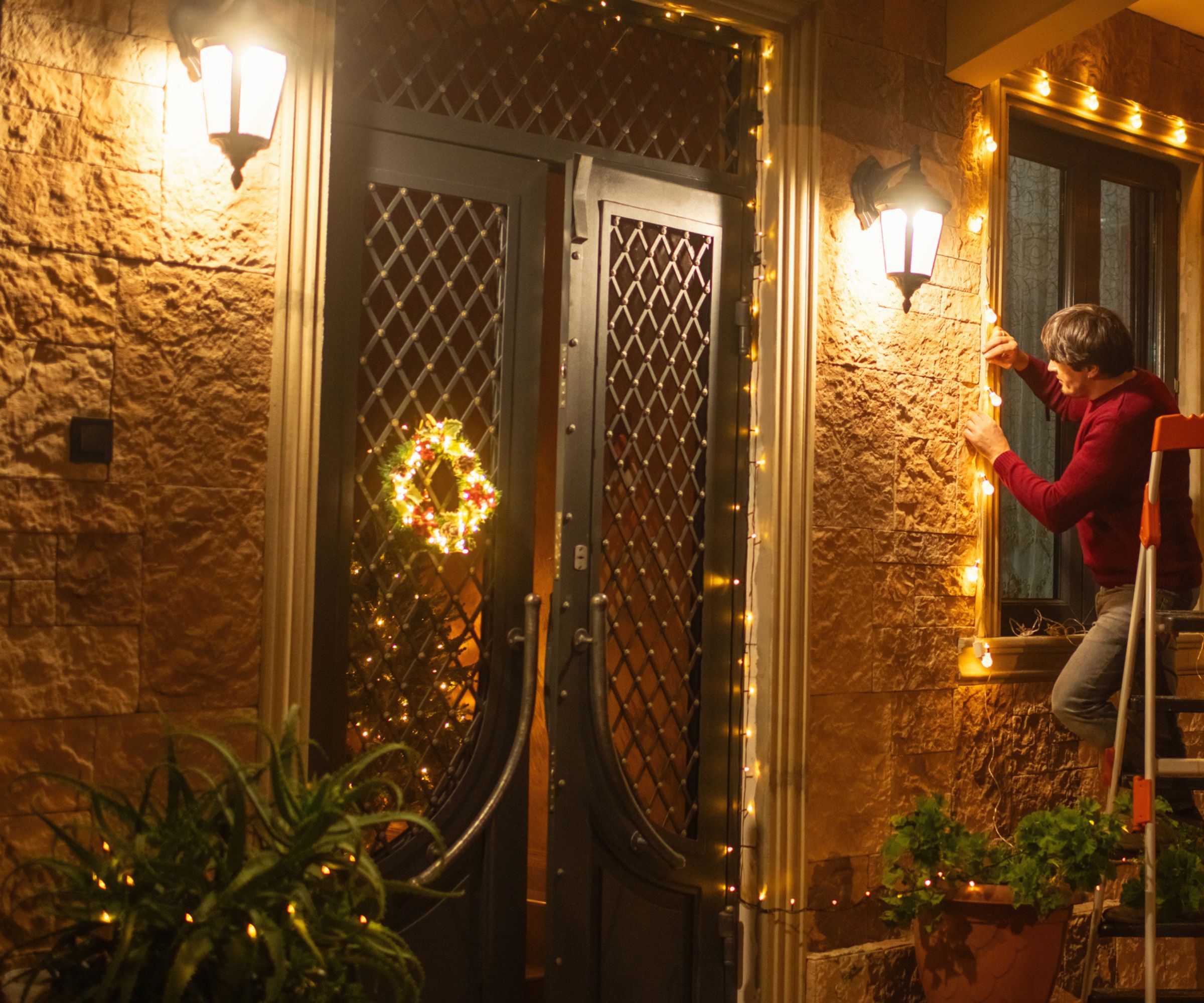
However, brick clips aren't feasible for every wall. Steven Mena told me 'For flatter brick walls that have no mortar spaces between bricks, or where the bricks are flush to the mortar, the best trick is using a hot glue gun. It works wonders especially when the bricks aren’t as gritty or sandy.'
The method is simple. Steven explains 'You wrap the Christmas lights with some electrical tape (only to areas that are meant to be hung, don’t tape the entirety) and glue it to your wall. It lasts really well if you use a thicker amount of glue. It lays well, and it dries up transparent so it’s not ruining your decor.'
However, it's not a perfect method. Myles Robinson warns that 'Hot glue is one option, but it requires some care. The key here is to use outdoor-rated hot glue, as it’s designed to withstand temperature changes and moisture.' This glue is easy to find - you can get 30 outdoor-rated Gorilla Glue hot glue sticks at Walmart, for example.
However, test a small patch first. It's almost always safe to use hot glue on brick, but there are times when it can damage the wall underneath. Myles suggests 'When it’s time to remove the lights, gently peel the glue off. It should come off cleanly without leaving marks, though it’s always a good idea to test it on a small unnoticeable area first.'
3. Mounting tape
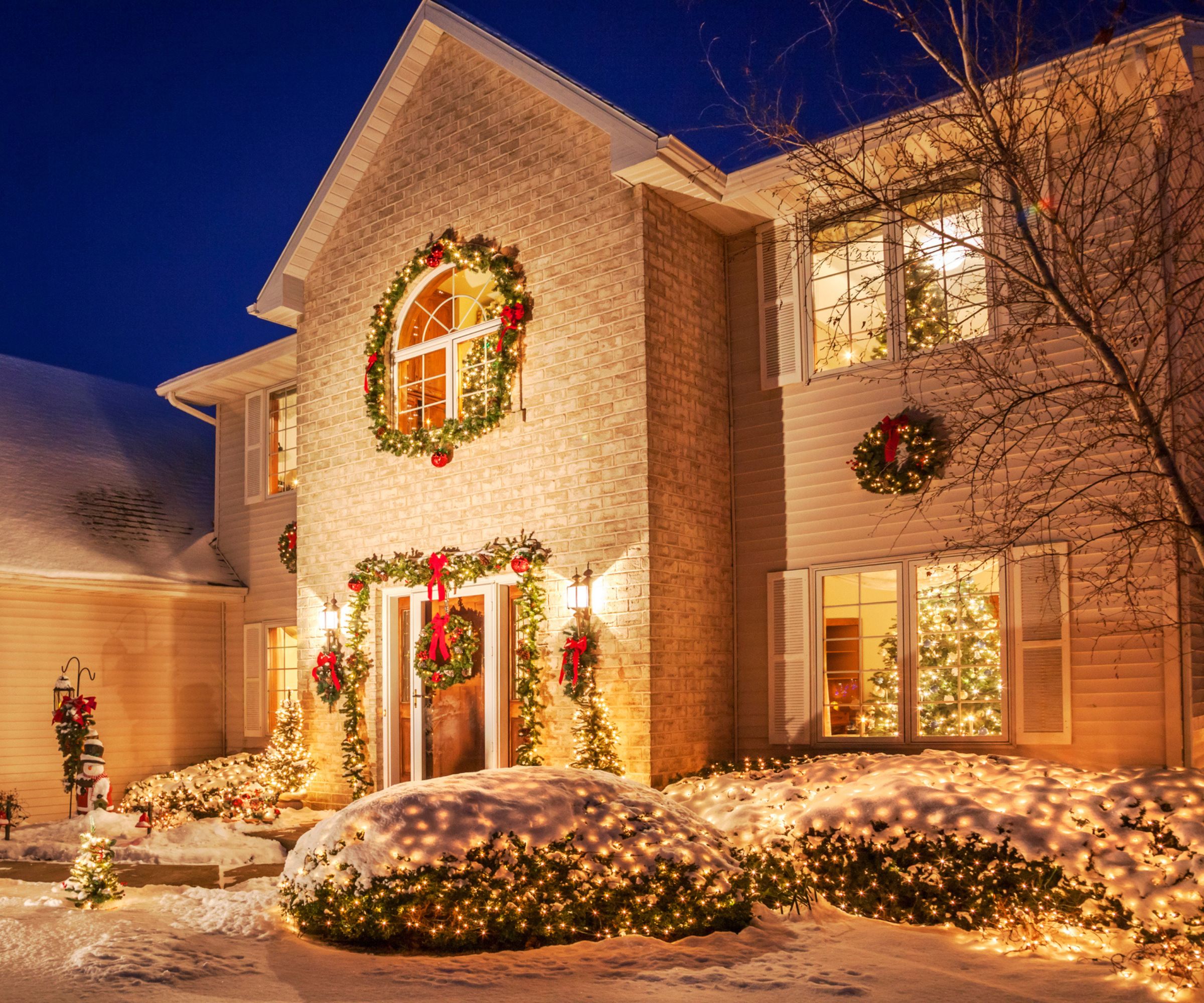
If you don't want to use brick clips, and you don't have a hot glue gun, you can also use outdoor mounting tape. Renovation expert Carr Lanphier says 'I usually say outdoor mounting tape is the best way to secure your Christmas lights to a brick exterior. In my experience people who aren’t generally crafty or DIY-prone might not have easy access to a hot glue gun, which is usually what you see recommended. In these cases, it might not make sense to run out and buy one, either.'
The method is simple. Myles Robison explains 'Choose a heavy-duty, weather-resistant version that’s made for outdoor use. Apply the tape to the brick surface, press it firmly, and then attach your lights to the tape.' It's that simple, and weather-resistant mounting tape is easy to find at Lowe's or Amazon.
However, just as with hot glue, there are a couple of drawbacks. Carr says 'The one thing I’ll note is that you will likely have to use some rubbing alcohol to dissolve the adhesive after the tape is removed, and I wouldn’t use it on painted surfaces to avoid the adhesive lifting up your paint.' It doesn't always work for heavier string lights with glass bulbs, or for the wettest parts of the country. Myles Robinson says 'Keep in mind that mounting tape works best for lighter decorations and might not hold up well in extreme cold or wet conditions.'

Carr Lanphier is CEO of Improovy, a company which provides on-demand home renovation services
4. Adhesive hooks
For a simple, quick solution, you can use adhesive hooks. These hooks stick straight onto brick or vinyl siding for easy installation.
Myles Robinson suggests that 'If none of these methods suit your needs, you can also try adhesive hooks designed for outdoor use. These hooks come with strong, weatherproof adhesive backings that stick to brick or other textured surfaces.'
You can find lots of exterior adhesive hooks on Amazon. However, you need to do a fair amount of research. Myles warns 'Just make sure to follow the manufacturer’s instructions for applying and removing the hooks to avoid any residue or damage. The method you choose will depend on the type of lights, the condition of your brickwork, and how long you plan to keep the lights up. As long as you pick the most suitable one, they will stay in place through the festivities.'
5. Drilling fixtures
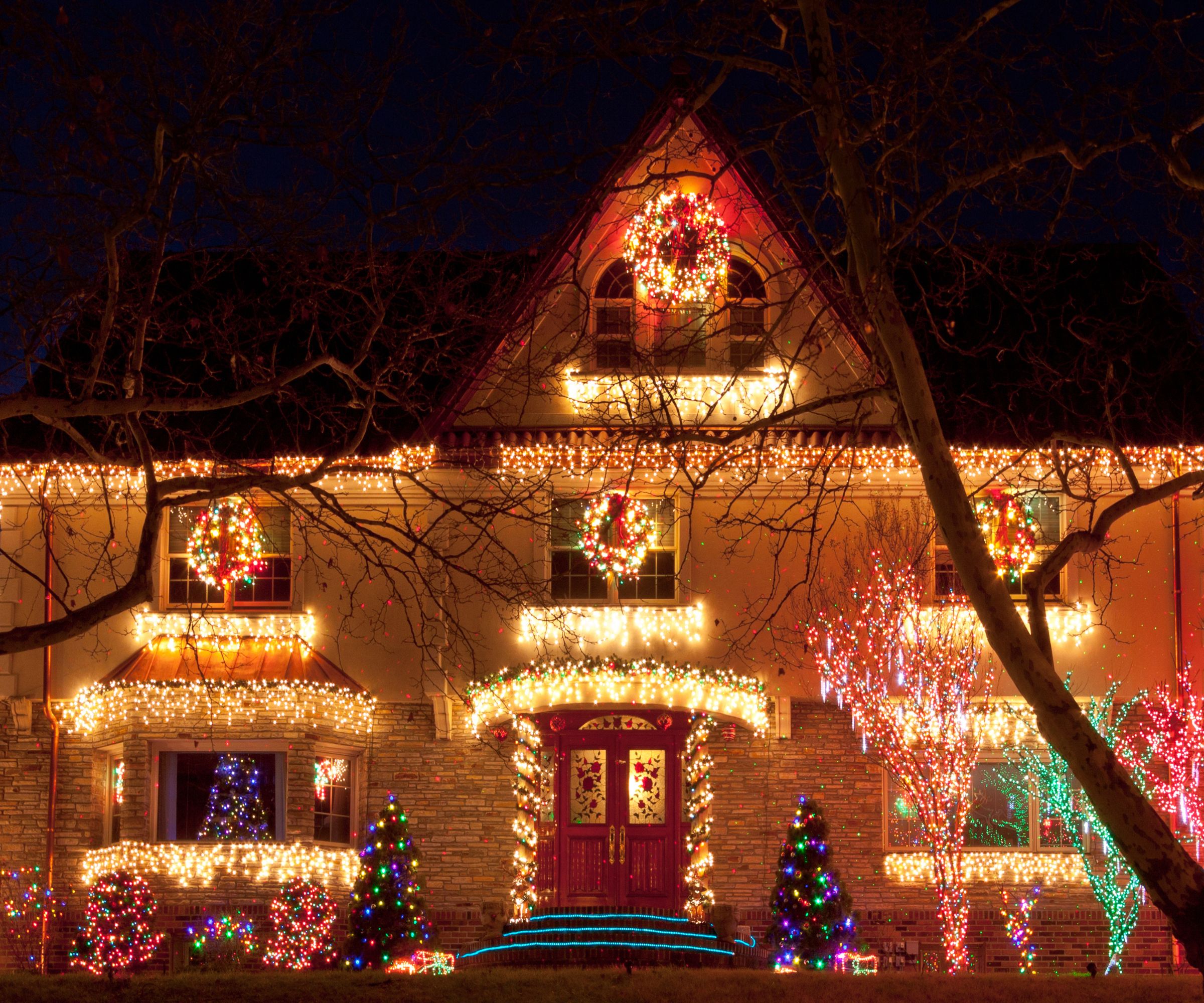
The final and most drastic solution is to mount your lights in hooks drilled straight into the brick. If you know that you'll put your Christmas lights up every year, this can be a permanent solution.
You need to work out where you need your hooks and mark every spot. Then, using the hammer function on your drill, drill holes in the brickwork. Then add a brick wall anchor and screw in your hooks. This will make permanent, hard-wearing support for your string lights.
However, it's a lot more work than any of the above methods, and when you aren't using the lights, you just have random hooks in your walls. Steve Mena warns 'You can drill your walls to mount your lights, but that’ll chip the brick and leave holes once you take down Christmas lights and decor after the holidays. If you’re sensitive to holes and chipped bricks, you’ll be spending a lot on repair, and even if it’s not a lot, you’re adding cost to home repair.'
Brick walls aren't the only place where Christmas lights can be tricky. I've also spoken to professional landscapers about the best ways to hang Christmas lights in trees, bushes, and shrubs. Just make sure you follow the fifty-per-foot rule so that you have enough lightbulbs to fill up and illuminate the space.
Sign up to the Homes & Gardens newsletter
Design expertise in your inbox – from inspiring decorating ideas and beautiful celebrity homes to practical gardening advice and shopping round-ups.

As a gardens and lifestyle contributor, Alex makes sure readers find the right information to help them make the best purchase. Alex got his start in reviewing at the iconic Good Housekeeping Institute, testing a wide range of household products and appliances. He then moved to BBC Gardeners’ World Magazine, assessing gardening tools, machinery, and wildlife products.
-
 Do cleaning products expire? Professional cleaners warn time could make them ‘less effective, and in some cases, irritating to use’
Do cleaning products expire? Professional cleaners warn time could make them ‘less effective, and in some cases, irritating to use’For the best results, it pays to stay on top of the timeline of your cleaning products
By Chiana Dickson Published
-
 7 of the best tomatoes for growing in pots - expert growers pick their top varieties ideal for large harvests from containers
7 of the best tomatoes for growing in pots - expert growers pick their top varieties ideal for large harvests from containersYou can enjoy bumper homegrown harvests in small spaces
By Drew Swainston Published